- Get link
- X
- Other Apps
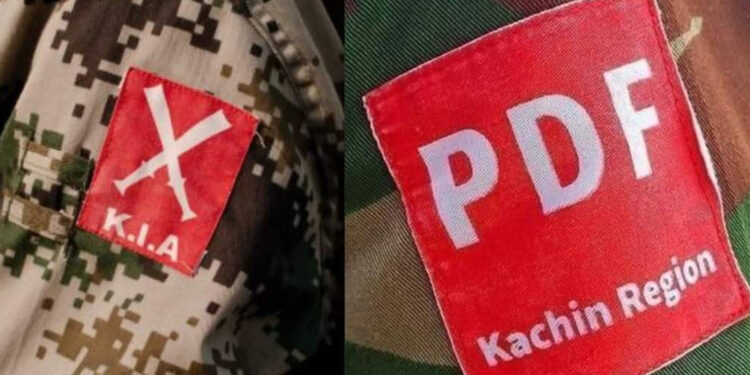
Arm badges of the Kachin Independence Army (KIA), and KIA-allied PDF
Following its power seizure in 2021, Myanmar’s military has been locked in a civil war spanning not only the central plains but also ethnic areas.Ethnic armed organizations (EAOs) with established armies, extensive combat experience and large arsenals are playing a crucial role in the ongoing popular revolt against the regime.

As It Loses Control of Rakhine, Myanmar Junta Resorts to Stoking Religious Hatred
May 14, 2024
2.9k

Ex-Thai PM Thaksin’s Half-Baked Peace Plan for Myanmar Unlikely to Take Off: Expert
May 14, 2024
1.3k

Ex-Thai PM Thaksin’s Attempt to Mediate Myanmar Crisis Deemed a Failure
May 9, 2024
2.7k
EAOs with strong centralization have demonstrated they have the resources and ability to land significant blows against the regime. Among these are the Kachin Independence Army (KIA) based in Kachin State, the Arakan Army (AA) based in Rakhine State, the Ta’ang National Liberation Army (TNLA) and Myanmar National Democratic Alliance Army (MNDAA) based in Shan State, the Karenni National Progressive Party (KNPP), the Karenni Nationalities People’s Liberation Front (KNPLF), and Karenni Nationalities Defense Force (KNDF).
Other EAOs based in Karen, Chin and Mon states are also fighting the regime, but their impact has been more limited due to internal friction and weak centralization.
Kachin State
The KIA captured all junta positions confronting its Laiza Headquarters in March. It also seized junta positions along the 120-mile road linking the second city of Bhamo with the Kachin State capital, Myitkyina.
On the border, it has taken control of the Lwegel crossing used for trade with China.
It captured Light Infantry Battalion 141 headquarters on April 28 in Hsinbo, a town on the Ayeyarwady River in Myitkyina Township. The armed group now controls the Ayeyarwady River between Bhamo and Myitkyina. It has also besieged junta positions in Myanmar’s jade mining hub of Hpakant.
Elsewhere, it has retaken control of gold and amber mines in Tanai Township, Myitkyina District. It also seized Sumprabum Township in Putao District on May 5, cutting off the Myitkyina-Putao road.
The KIA is now fighting the regime in Bhamo while posing a threat to Waingmaw, Mogaung and Mohnyin townships. It is also gaining greater control of Tanai and Chipwe. People’s Defense Force (PDF) groups under the parallel National Unity Government are fighting alongside the KIA in Kachin State.
Chin State
Chin resistance groups launched offensives to seize towns in parallel with the anti-regime Operation 1027 in northern Shan State. However, there have been few clashes in Chin State since March, except in Kyindwe town in Kantpetlet Township. With assistance from the AA, Chin resistance groups and PDFs from Magwe seized the town in late April after four months of fighting.
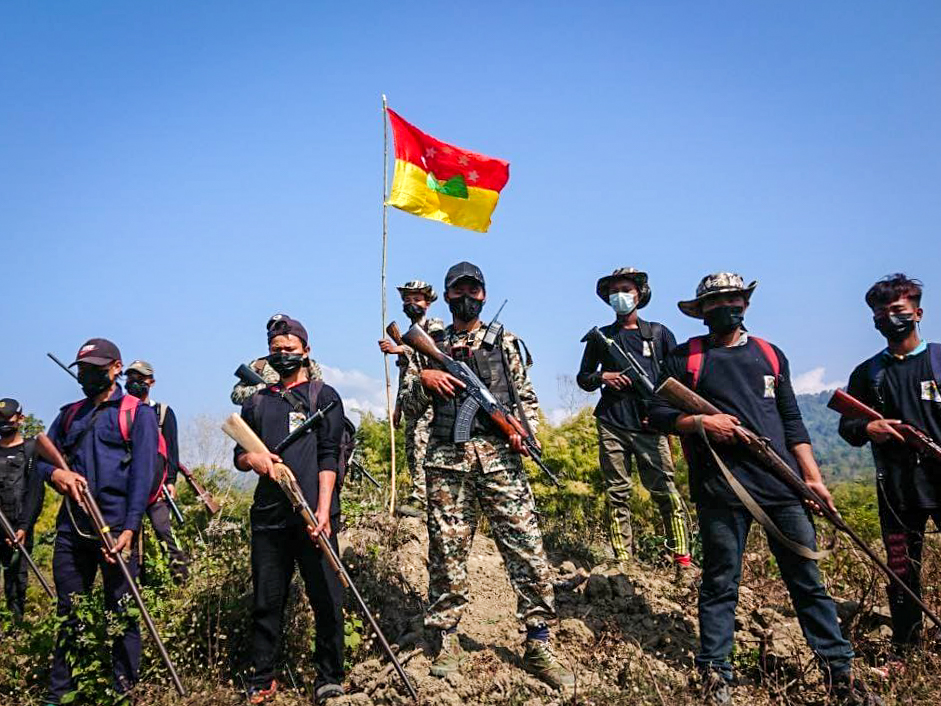
The town is a strategically crucial stronghold for combined anti-regime forces from Chin, Magwe and Rakhine. It forms a gateway to the resistance stronghold of Yaw region comprising Gangaw, Htilin and Saw townships in Magwe; Chin State’s hotspot of armed rebellion, Mindat and Kanpetlet; and the Lemro River to Mrauk-U in Rakhine, about 50 miles to the southwest as the crow flies.
Although dozens of tribes make up the Chin people, there are only two political groups. Both are fighting the regime.
Rakhine
Since launching its offensive in November, the Arakan Army has seized nine towns in Rakhine and southern Chin State.
Fighting has intensified in Buthidaung, Maungdaw, Ann and Thandwe townships since March. The regime has suffered heavy casualties during AA attacks on border guard police battalions in Maungdaw neighboring Bangladesh. Hundreds of border guards have fled to Bangladesh while many others have surrendered to the AA. Only two or three junta battalions are left in Maungdaw as the AA advances.
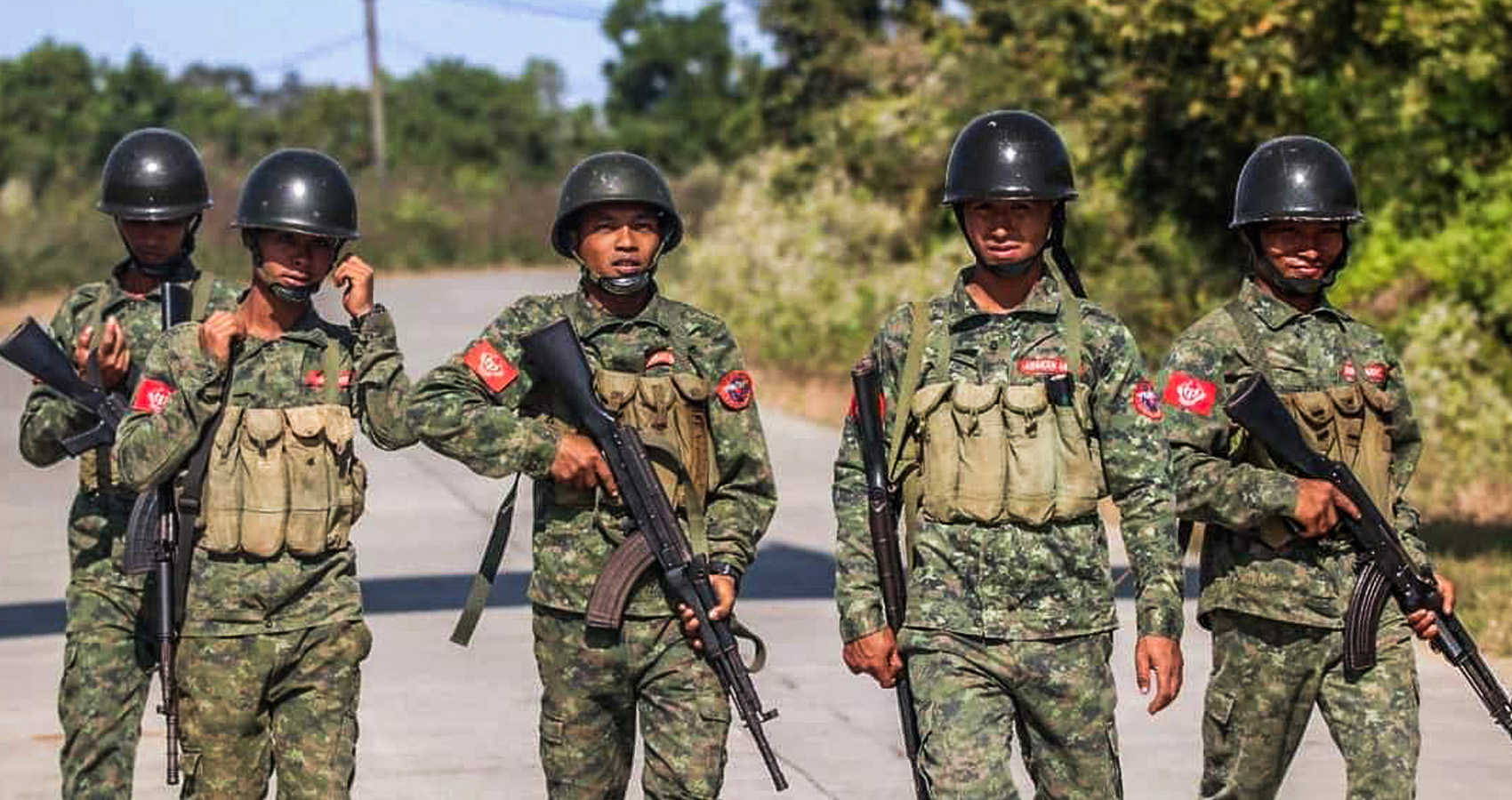
The ethnic army has also seized the 15th Military Operations Command and four battalions in the garrison town of Buthidaung, home to a dozen junta battalions including an artillery unit. The regime has suffered heavy casualties and lost hundreds of soldiers to mass surrenders in Buthidaung.
The AA is also targeting Western Command in Ann Township, attacking a hilltop command base guarding the command.
The armed group now controls the road linking Ann with Minbu in Magwe Region. Recently, it intercepted a junta convoy carrying weapons and food supplies on the Ann-Minbu road.
AA and junta troops also clashed near Tha Htay Chaung hydropower dam between Thandwe and Taungup in April, and tensions are still running high there.
Karenni (Kayah)
The junta’s administrative mechanism has collapsed in Karenni State, which borders its nerve center of Naypyitaw.
Resistance forces have captured Maese, Ywathit, Shadaw, Mawchi, Moebye and Nan Mae Khon towns and now control half of Loikaw, the Karenni State capital. They claim control over 90 percent of the state.
Fighting has been raging since March in Moebye on the border of Shan and Karenni states, and Hpasawng.
Light Infantry Battalion 422 is under siege in Moebye, with the Karenni resistance forces ambushing junta reinforcements from Shan State’s Pekon Township.
Resistance forces have seized Infantry Battalion 134 in Hpasawng and are attacking Infantry Battalion 135. Over 100 junta reinforcements sent to Hpasawng have reportedly been killed in resistance ambushes. Resistance forces shot down a junta helicopter near Hpasawng on May 6.
Karen and Mon states
In the south of the country, clashes have rocked Papun, Myawaddy and Kyarinseikkyi in Karen State, Ye Township in Mon State and Dawei Township in Tanintharyi Region.
The resistance is led by the Karen National Union (KNU), PDF groups, a splinter group of the New Mon State Party known as New Mon State Party Anti-Dictatorship (NMSP-AD), and local anti-regime groups.
Resistance forces have seized Papun town and are attacking four junta positions including two battalion headquarters in the township.
Resistance forces seized junta positions near the country’s main trade hub of Myawaddy on the Thai border. They were however forced to withdraw from Myawaddy Town after intervention by the junta-affiliated Border Guard Force (BGF).
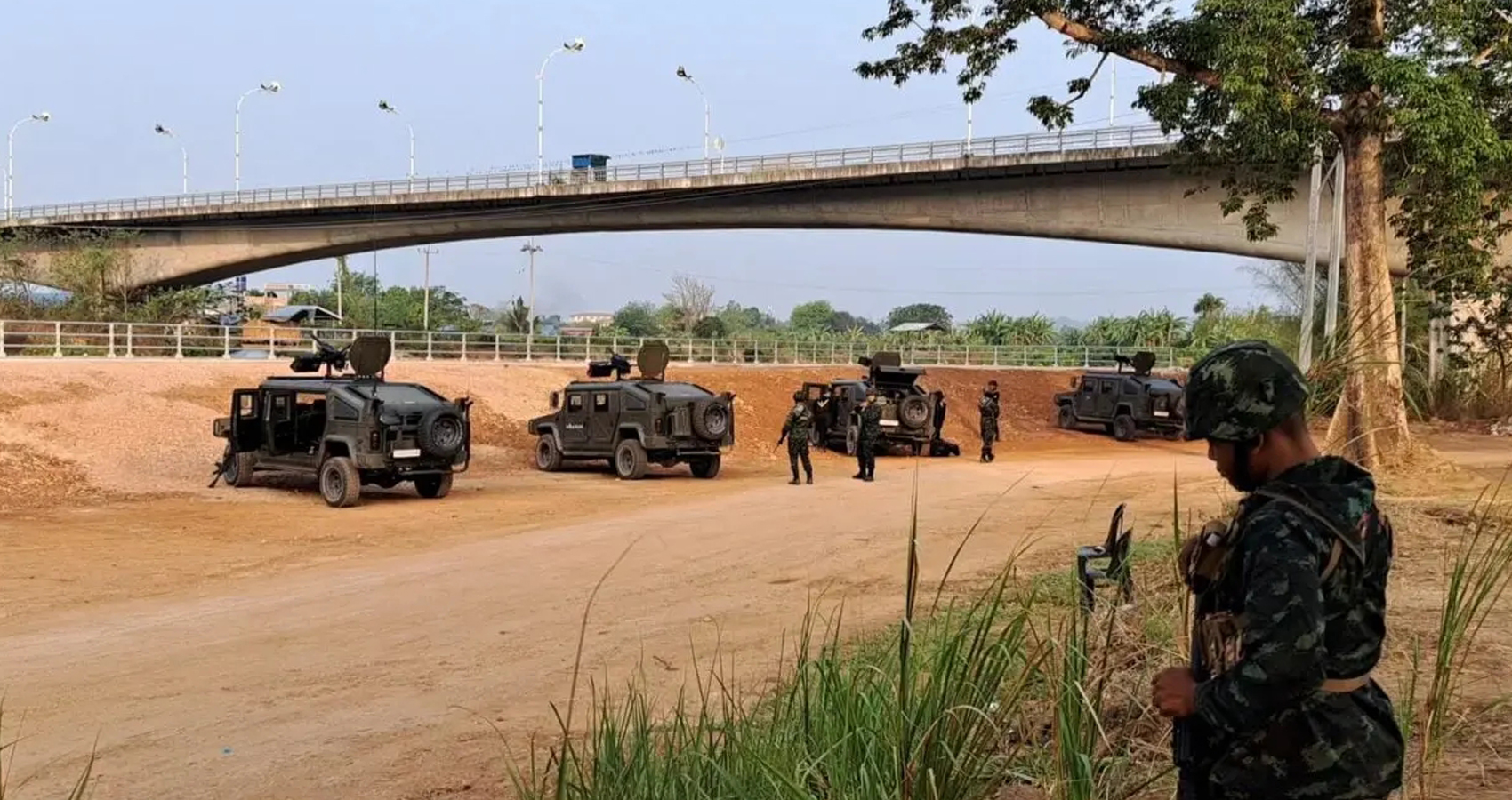
The junta had earlier faced humiliation when the 44th Light Infantry Division fled to the Myawaddy-Mae Sot Bridge under the eyes of foreign journalists who were monitoring the fighting from the Thai side of the border.
To add insult to injury, Thai Prime Minister Srettha Thavisin suggested that the regime was weakening and should engage in talks with the opposition. The regime responded by launching a counteroffensive coded Operation Aung Zeya to retake full control of Myawaddy.
Allied forces of the KNU and PDF mounted a defense in the nearby Dawna Hills, killing around 150 junta soldiers and destroying an armored vehicle. Junta troops remain trapped in the Dawna Hills one month after Operation Aung Zeya was launched.
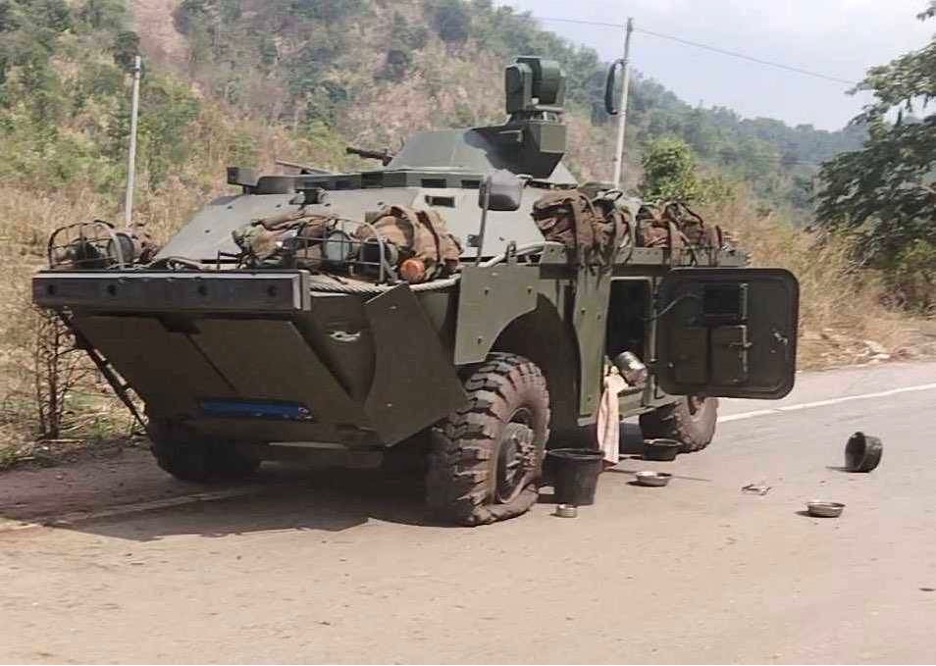
Clashes have also spread to Dawei’s Htee Khee, another trade town on the Thai border.
Despite its decentralized organization, with each brigade acting relatively independently, the KNU has performed impressively on the battlefield. However, unity among disparate Karen armed groups remains an issue.
Shan State
The TNLA and MNDAA have achieved their territorial ambitions in northern Shan State and are installing civilian administrations and rebuilding infrastructure.
Meanwhile, a faction of the Pa-O National Liberation Organization led by Khun Thurein is fighting the regime around Hsihseng Town.
In southern Shan State, Karenni resistance forces and PDF groups are battling the junta.
In Danu Self-Administered Zone, the newly formed Danu People’s Liberation Front and Danu PDF are fighting the regime.
Meanwhile, the anti-regime Lahu Democratic Union has begun military training on the Thai-Myanmar border.
The Shan State Progress Party (SSPP), one of the oldest Shan groups, is also reportedly preparing to fight the regime after announcing that dialogue with the Myanmar military was no longer a practical path. While the group has yet to declare war on the regime, it is rumored to have supplied arms to the Karenni Nationalities Defense Force and Pa’O National Liberation Organization. The SSPP already controls much of the rural area along the road linking Nawnghkio, Kyaukme, Hsipaw, Lashio, and Taunggyi, Hopong, Loilem, and Kunhing in southern Shan State.
Meanwhile, the Restoration Council of Shan State (RCSS) has been engaged in peace talks with the regime since the coup.
“The PDF may turn into robbers who commit violence and harm the people with their weapons in the future. So, I don’t support PDFs,” commented RCSS chairman Yawd Serk.
(Aye Chan Hsu is a political and military analyst.)
Source: Myanmar Ethnic Armed Groups’ Advances Against Junta: State-by-State Breakdown
- Get link
- X
- Other Apps
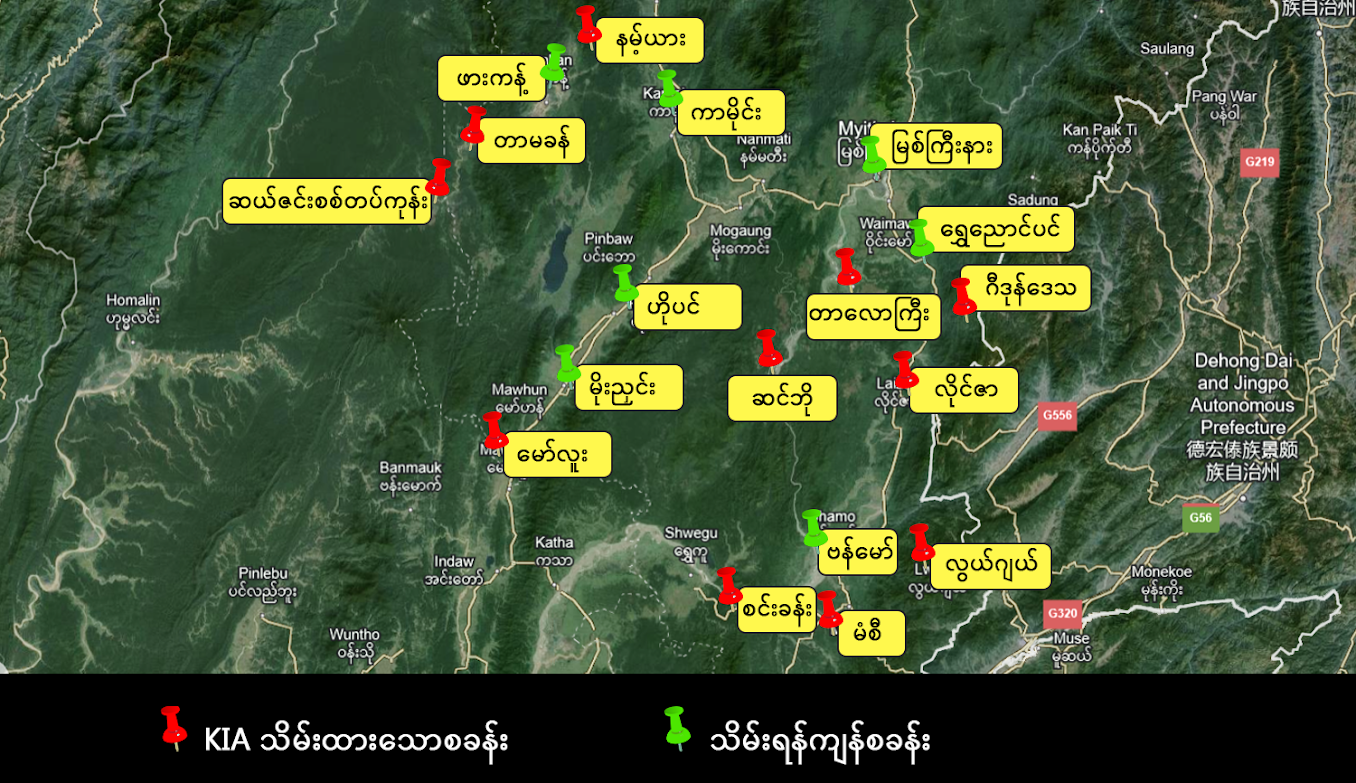
Comments
Post a Comment